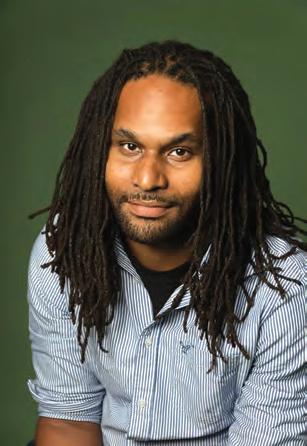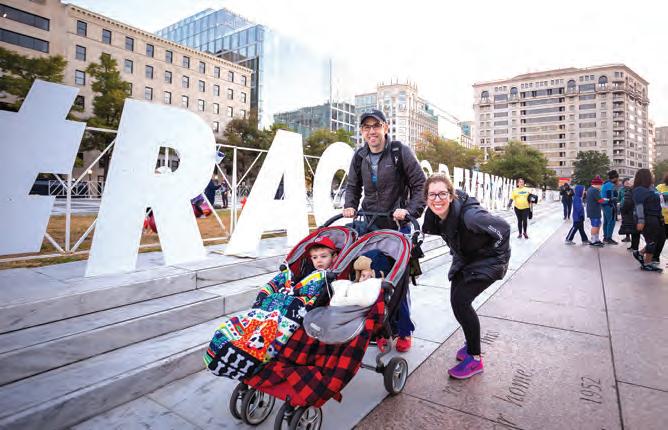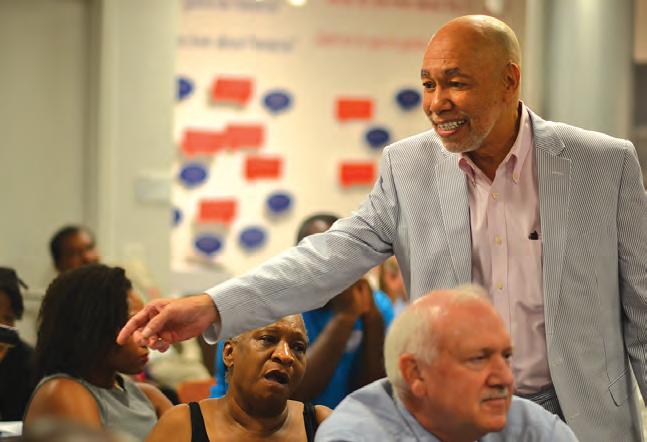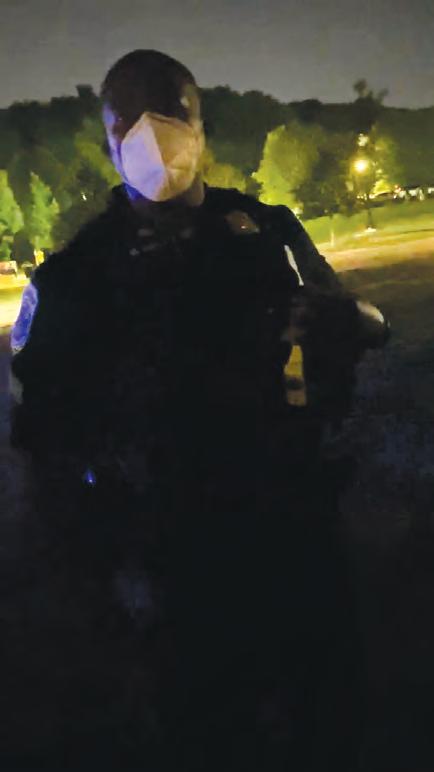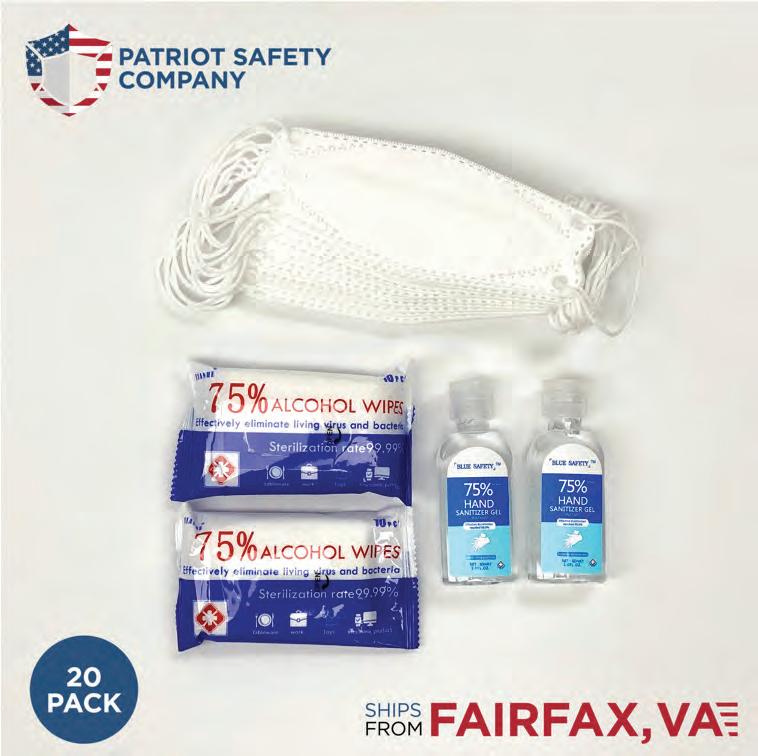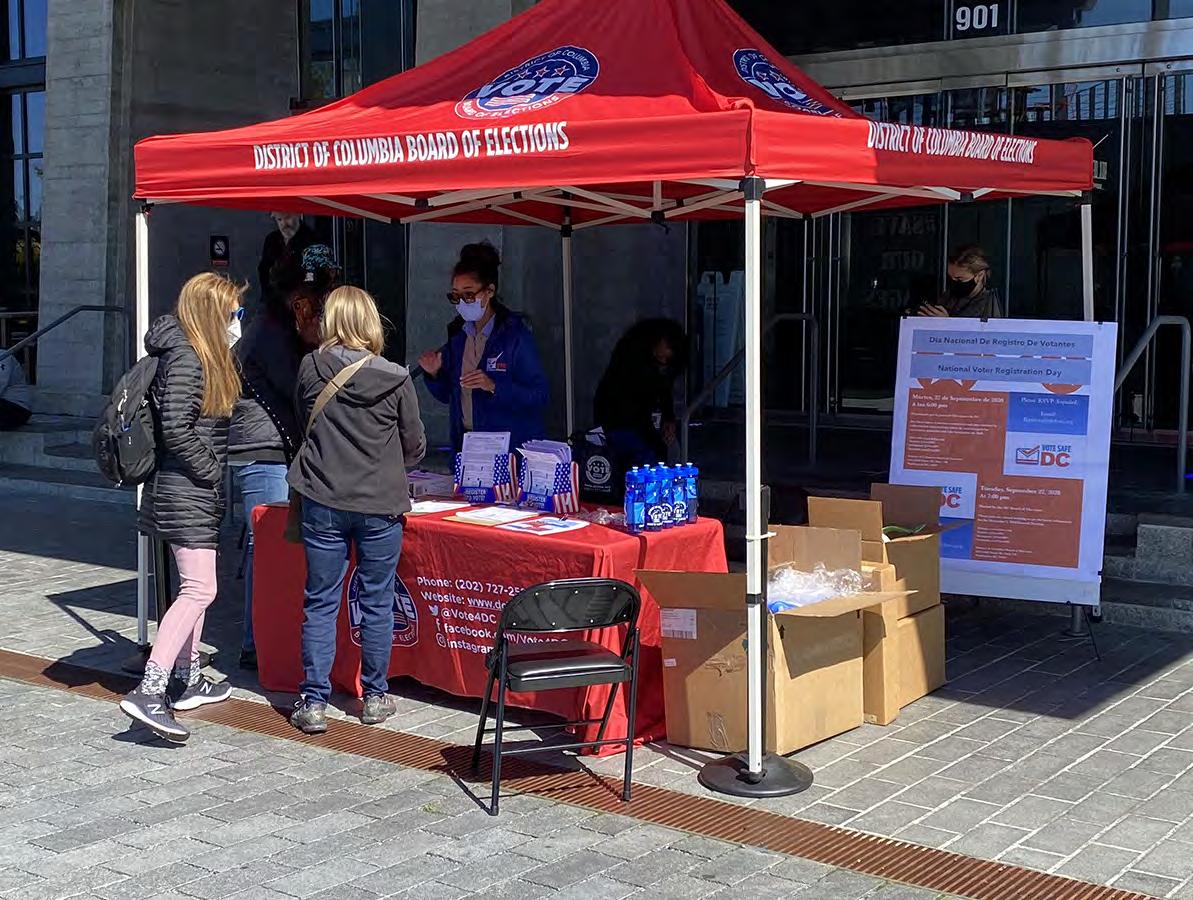
8 minute read
Our River: The Anacostia Keeping Score with the Riverkeeper by Bill Matuszeski
Our River: The Anacostia Keeping Score with the Riverkeeper
The Anacostia Riverkeeper is part of the Waterkeeper Alliance, which operates along rivers and their watersheds all around the world. There are 18 Waterkeeper organizations operating throughout the Chesapeake watershed alone.
The interim Anacostia riverkeeper is Trey Sherard, who has spent the past eight and a half years working with communities along our river. Sherard also serves as chair of the Anacostia Watershed Citizen Advisory Committee hosted by the Metropolitan Council of Governments. And he is a member of the Mayor’s Leadership Coordinating Council for the River. Sherard grew up along the Atlantic coast in Wilmington, North Carolina, and studied marine biology at Duke.
I spent some time recently learning what the riverkeeper is doing, and asked about progress on the Anacostia.
Engaging the Public
The riverkeeper’s main task, I learned, is to reach out and engage the public in the clean-up progress along the Anacostia, and to assess the work to be done and how to make it happen. Depending on the issue, the job is to engage communities, neighborhoods, families and/or individuals. This includes learning what is possible through such activities as fishing, kayaking, boat tours and citizen monitoring of water quality.
“We also demonstrate green infrastructure actions at churches and other large community gathering places that you can carry out at home on your property – such things as controlling stormwater runoff by installing rain barrels or rain gardens, Sherard says. “Also, there are some issues where the political clout of organized citizens is the best way to assure a positive response from government or the private sector.”
by Bill Matuszeski
Measuring Progress
Sherard is quite pleased with progress to date and is looking forward to more. One of the big issues is the handling of combined sewer overflows or CSOs. Nearly all the older US cities, for the last century or more, have used stormwater runoff to flush out the sanitary sewer effluents from houses and businesses. But the engineers who designed and installed these systems failed to envision the increased stormwater flow from development and paving over the years.
Since it would be a disaster to allow the comTrey Sherard proudly surrounded by Anacostia River trash. Photo: Anacostia Riverkeeper bined sewers to back up into basements or over- Communicating es until they were banned in 1979. They flow into the streets, they were designed and Monitoring have ended up in air, water, soil and fish to discharge directly into rivers and As Sherard sees it, “The key now is to es- and do not break down. The company has streams during a storm. Soon there was tablish a credible information system to agreed to pay $52 million to help pay for a call for clean-up, and since separating designate what is safe to do where – swim- the clean-up. the sewer lines was prohibitive, in many ming, fishing or whatever. The combined In another important action, the Decities the decision was made to build tun- sewers are not the only sources of pollut- partment of Energy & Environment nels to store the combined sewage until it ants, so more needs to be done. And there (DOEE) has delivered the interim record could be handled by the treatment plants. must more efforts supported to engage the of decision (ROD) to define how they will
DC has been leading this effort na- public in helping monitor water quality clean up contaminated sediments in the tionally, and the system designed for the and cleanup efforts themselves to know River. “The ROD is focused on a numAnacostia, which is well underway, is the what is safe, when and where.” ber of sites where the most serious polbest in the region. There has already been Sherard also believes that control lution is evident,” says Sherard, “but the a 90% reduction in combined sewer over- and reduction of toxic pollution has been clean-up of these early action areas will be flows in the Anacostia, and when the tun- helped by DC’s recent legal settlement just the first big steps toward the successnel system is complete in 2023 that will with Monsanto related to PCBs, a par- ful cleanup of over a century of toxics engo up to 98%. ticularly nasty family of toxic chemicals tering the River.” The interim ROD and
Sherard is also pleased with the new found throughout much of Our River and other related reports are available at www. trash collection boats run by DC Water, known to cause cancer and life-long learn- anacostiasedimentproject.com. which appear to be doing a good job of ing disabilities in children born to mothgathering up much of the trash that has entered the system through direct runoff, sewers or other sources. ers exposed to them. PCBs were produced by Monsanto and used in paints, sealants, caulking and electric appliancMore to Be Done All this is not to say that everything is fine. As optimistic as Sherard is about the prog-
ress, he has a list of things that still bear watching. “First, we need to develop the means to tell the public quickly and accurately about safe and unsafe areas and conditions – increasing investment in DOEE’s volunteer water quality monitors and adding real-time spill advisories by DC Water for over ows and breaks in sewer lines.”
“Second,” he notes, “we need to make sure that progress continues on toxic clean-ups beyond just the early action areas in the Interim ROD, in particular Kenilworth Park (formerly land ll), the cove below the site of the old Pepco powerplant above Benning Road, and Lower Beaverdam Creek in Maryland, which empties lots of toxics into the river at the DC line.”
“Third,” he continues, “there are numerous toxic hotspots just below the threshold for early action under the interim ROD. They should not be forgotten while the bigger problem areas are being treated.”
“Fourth,” he adds, “we need to know how setting the channel depths on the river for the toxics cleanups will impact the river’s capacity to handle ash oods and large water volumes from storms now and in the future. Once the channel depths are set and capped to control the toxics in the sediments, it will be di cult and expensive to deepen them, if allowed at all.”
“Finally, plastics are a pervasive pollutant di cult to capture and remove, so signi cant e ort needs to go into preventing their widespread distribution. Singleuse plastic bottles, for example, comprise up to 60% of the oating trash in our river. Existing laws on plastic bags and foam need to be better enforced.”
These are the tough problems. If you want to help in nding solutions and keeping the pressure on to make progress, feel free to check in with Sherard and the Anacostia Riverkeeper o ces at www.anacostiariverkeeper.org or by e-mailing trey@ anacostiariverkeeper.org. You will find them a great bunch of folks to work with on practical solutions.
Bill Matuszeski is a member of the Mayor’s Leadership Council for a Cleaner Anacostia River and the retired director of the Chesapeake Bay Program. He serves on the board of Friends of the National Arboretum and on citizen advisory committees for the Chesapeake and the Anacostia. ◆
CONTINUING TO SUPPORT THE COMMUNITY THROUGH COVID19 COVID19




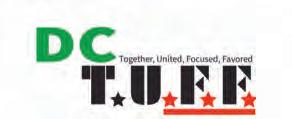
• Face-Mask Donation Program • ‘Wellness on Wheels’ every Wednesday:
General Health//COVID19 Testing//Free HIV
Screening • Provision of Perishable and non-Perishable Groceries • Virtual Youth Arts and Tutoring Programs
FACE-MASK PRODUCTION INITIATIVE FACE-MASK PRODUCTION INITIATIVE
Donation of Reusable Face-Masks: Most of our efforts are focused on making masks for donations, with a focus on Ward 7 and Ward 8 seniors and making masks for donations, with a focus on Ward 7 and Ward 8 seniors and families in need. place your order here for your contactless delivery https:// families in need. place your order here for your contactless delivery https:// faunteroycenter.org/covid19-response/ or contact the Center. faunteroycenter.org/covid19-response/ or contact the Center.


Commercial Reusable Face-Mask Orders: Proceeds from commercial orders Commercial Reusable Face-Mask Orders: will be put back into the mask donation initiative. Order your custom masks will be put back into the mask donation initiative. Order your custom masks to show your pride and brand for family events and activities, church groups, company branding, schools for children and staff, etc. We are able to add logos, names, slogans and designs you provide to us, numerous colors are available in comfortable PolyCotton or Black Muslin. You can place your inquiry here https://faunteroycenter.org/commercial-face-mask-orders/ or call the Center:


PARTNERS:
SUPPORTED BY: DC HOPE I DC ARTS I DMPED
info@faunteroycenter.org I 202-397-5454 I
faunteroycenter.org
WIDE SHOE OUTLET
Men’s and Women’s sizes up to 15 EE Brands: Naturalizer • Soft Spots Ros Hommerson • Propet Walking Cradles • Easy Street
$10off
All Sales Limited Time simplywide.com
Lots & Lots Wide Width Shoes
All Day Comfort
4279 Branch Avenue Marlow Heights, MD 20748 301-702 1401 www.simplywide.com




